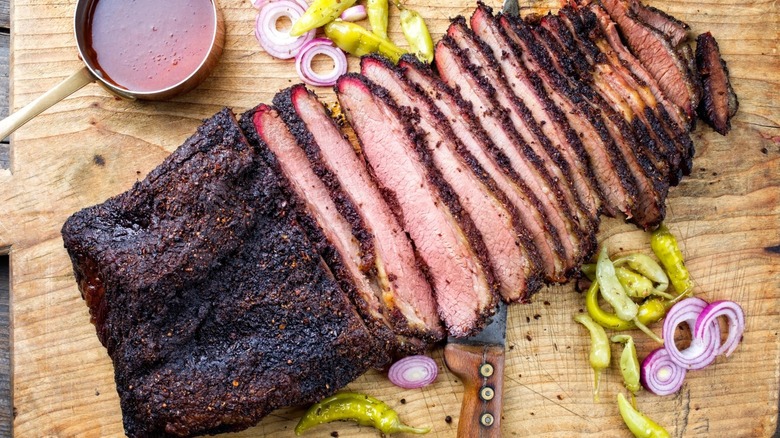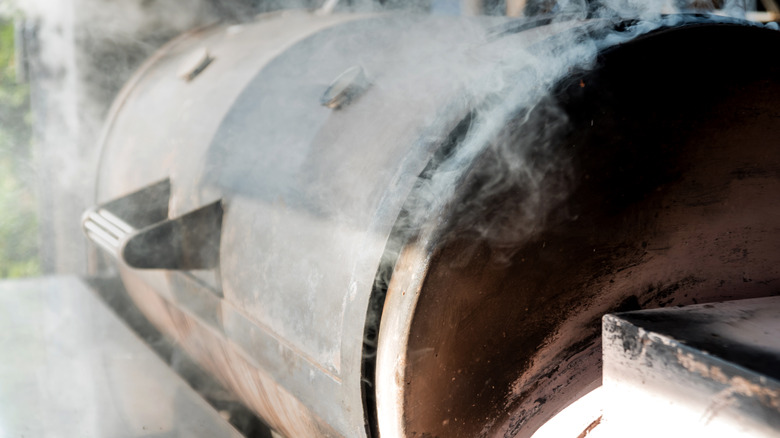Why Brisket Used To Be Given Away For Free
In the world of smoked meats, brisket is now considered a prized cut that goes a long way to determining whether a barbecue joint is any good. It's become a featured staple category at BBQ festivals and competitions, where pitmasters square off to showcase their brisket-cooking chops. Average culinary Joes and Janes are experimenting with their own brisket methods and recipes at home on backyard smokers.
If you are traveling through Texas, the land of beef, the quality of smoked brisket served at a barbecue restaurant is highly judged and scrutinized by defined palates. You might get away with slinging mediocre pulled pork, but you better ace that brisket or you won't survive in the industry for long.
As demand has increased in recent years for this melt-in-your mouth meat candy, so too has its price tag (via the Texas Farm Bureau). Alas, when it comes to basic economics, popularity has its downside. But brisket wasn't always this well-regarded or expensive. In fact, it used to be viewed as such a lowly cut that it was given away for free before folks revered it and made the best beef brisket recipes.
Brisket was historically a cheap cut of meat
Prior to the days of the brisket revolution and experts gradually honing and perfecting their cooking techniques, brisket was not highly valued in America (via What's Cooking America). The cut, which derives from the front lower chest of the cow, is tough and full of connective tissue that requires a lot of preparation time and attention to detail.
It may be difficult to fathom today, but brisket was once relegated to being ground up for use in chilis, stews, and even animal feed because of its supposed inferior status to other cuts. Since they were considered useless, ranch owners would give the brisket cuts to their ranch hands, while holding on to what they perceived at the time as the prime parts. Still, it made one of the heartiest stews to cook for dinner, even before it became a prized cut.
A group of German and Czech immigrants in Central Texas is credited with changing the game in the 1950s when they cooked brisket slow and low over indirect heat. Thus, Texas-smoked beef brisket was born. This meticulous, low-and-slow approach helps address that pesky connective tissue problem.
Nonetheless, brisket initially remained an inexpensive blue-collar meal primarily eaten by ranchers and immigrants on butcher paper. Not so much anymore, except maybe for the butcher paper part, a throwback which you'll find at many casual BBQ joints. The secret is out: Brisket, when cooked properly, tastes amazing. Now the brisket scene is booming, per The Cold Wire, and we're all paying the price for it.

